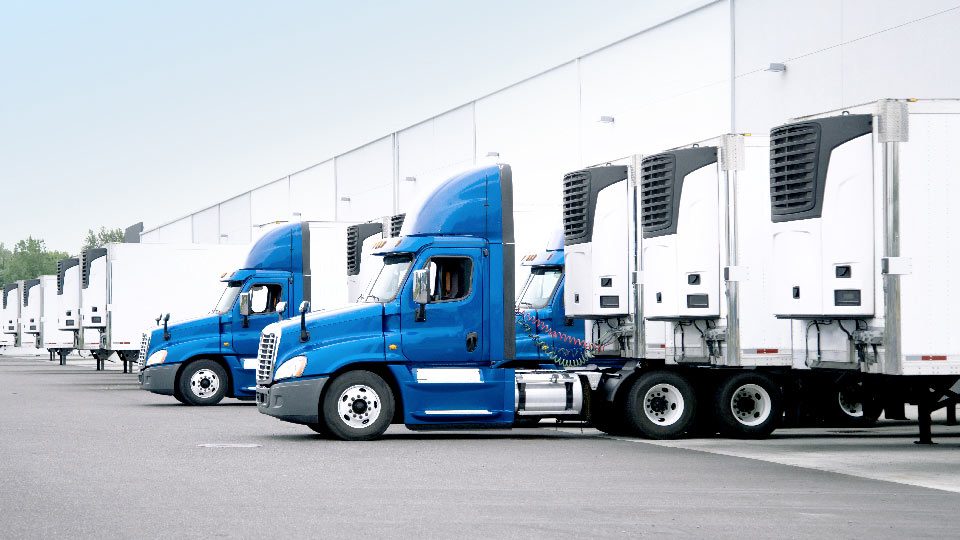
A fleet’s guide to multi-stop route planners
Last updated on April 24, 2024 in Fleet Management by Geotab Team | 5 minute read
Table of contents
What are the benefits of having a multiple route planner for your fleet? We break down everything you need to know about effective multi-stop fleet route planners.
Imagine this: you’re headed out the door for dinner with a group of friends and all of a sudden it hits you that you have no idea how to get there. Should you take the highway, or are backroads a better option for this time of night? You all of a sudden remember that one of your friends needs a ride there – what’s the most efficient way to pick them up and still get to dinner on time? You look down at your phone; what mapping app is the most reliable for your area?
Wouldn’t it be convenient to have a system that makes all of these decisions for you so you can focus on other parts of your evening? That is essentially what a route planner with multiple stops does for fleet managers!
What are driving route planners?
Route planning for a fleet obviously looks a little different from planning your drive to dinner. Route planning for fleets is the process of finding the most optimized routes for drivers in order to hit delivery arrival times, reduce fuel consumption, cut down on nonessential driving and streamline dispatching. It’s done using help from a route planning software as well as GPS vehicle locators placed in fleet vehicles.
Multi-stop route planning solutions for fleet management contain multiple functions that help managers plan their routes more efficiently. Some of those include:
- Long-range planning: helping to effectively plan long-range routes in order to cut down on unnecessary driving.
- Location intelligence: using GPS to monitor fleet vehicles, ensuring real-time control over assets.
- Real-time dispatching: knowing which vehicles are open to work and close by enough to be dispatched.
- Day-to-day operations: improving arrival times, reducing miles traveled and balancing job distribution.
- Analytics: allowing fleets to leverage their data in order to make more informed decisions about route planning in the future.
The need for multi-stop route planning
Getting from Point A to Point B is easy enough – but what happens when you throw in Point C? Point D? Point Z on the other side of town that needs their delivery ASAP? But also Point E that’s only a couple blocks away and should take five minutes to service?
You get the point.
A regular day for a fleet involves much more than Point A to Point B – it involves multiple trips, multiple stops and multiple vehicles. That’s why it’s important to pick a route planning solution and long distance trackers that enable you to optimize multiple deliveries and receive the most accurate and efficient route for drivers. You might be thinking that this could be done from a simple GPS vehicle locator or a free routing software like built-in map applications.
However, these plug-and-play options generally have limitations, including a maximum number of stops in a route, no dynamic capabilities or real-time adjustments, and no reporting or analytics features. In order to get better route optimization, it’s best to adopt a route planner that offers the exact features that your fleet needs instead of relying on out-of-the-box solutions.
Multi-stop route planners are all about getting the right person to the right place at the right time, so fleet managers can focus on other business needs.
The benefits of optimal route planners
There are many benefits for fleets that decide to use multi-stop route planners, including:
- Cost savings
Fuel continues to be a major expense for fleets, but the right route planner can help businesses save money when it comes to fuel spend. Multi-stop route planners help cut down on distance traveled by optimizing a driver’s stops for the day, equating to lower fuel consumption. Fleets can also save money by identifying their ideal fleet size and cutting out unnecessary additional vehicles. Less overall driving also means less wear and tear on vehicles, saving fleets costly maintenance spendage.
- Increased productivity
By reducing the time it takes to complete deliveries or appointments through route optimization, fleet drivers can get more done during a shift. This helps optimize day-to-day operations, giving fleet managers a more holistic view of the work being accomplished and identifying areas where improvements can be made.
- Higher customer satisfaction
We all know how it feels to track a package’s delivery only to have it pushed back unexpectedly. By utilizing multi-stop route planners, fleets can cater directly to their customers, providing them more accurate, reliable and speedy deliveries and, in turn, leaving them more satisfied and more likely to be a repeat customer.
- Analytics
Multi-stop route planners can help give fleets deeper insights into their on-road operations. This provides the opportunity for continued improvement and the ability to make better decisions for the future, especially when it comes to operational efficiency.
How to choose the right route planner for your fleet
Every fleet is different – that’s why we always encourage fleets to do their homework when it comes to adding on a route planner. It’s best to come up with a list of features that you absolutely can’t live without and a list of nice-to-haves so that you can find the most efficient route planner for your fleet. While you’re creating these lists, however, it’s also important to focus on some broader aspects of your new route planner in order to future-proof your fleet.
Scalability: A multi-stop route planner needs to scale with a fleet when they increase vehicle inventory, broaden their delivery radius, take on new clients or open a new franchise. By having a routing solution in place that is flexible, fleet managers and administrators won’t need to spend as much time or put in much extra effort to set up effective routes that take into account the new stipulations.
Reliability: Routing is a major part of a fleet’s operation. Having a solution with limited downtime helps make sure that drivers are still able to complete their deliveries and visits in the most efficient manner possible. It’s also important to delve into the solution to ensure the efficiency of the routes, the accuracy of the real-time updates and the estimated arrival times.
Usability: Above all, fleet managers need to understand the solution in order to get the most out of it. Look for something that is intuitive, easy to use and doesn’t require intensive training. Route optimization maps can be complex compared to a traditional map, but the right software will make the switch that much easier.
Integration capabilities: Lastly, it helps to have a solution that is easily integrated into other systems that you are using. This helps take into account multiple sources of data so you get the most accurate route possible. It also allows for richer reporting and analytics to base future decisions off of.
Features to look for in a route planner tool
The best route planner features are going to look different for each fleet, but here are some to keep in mind while you are considering your options:
Organized customer data
A good route planner will allow you to import large volumes of customer data in multiple formats.
Real-time driver tracking
The ideal route planning solution will give you access to every driver’s exact location – usually using a long range GPS tracker – so that you can effectively and efficiently dispatch them if need be.
Delivery ETAs
A great feature of route planners is estimated times of arrival for your customers. Being able to go above and beyond to offer them detailed and precise information creates brand loyalty for your clients.
Real-time route updates
Whether it’s a weather event, traffic or inefficient detours, an efficient route planner will be able to interpret real-time data and make changes to routes as needed. Additionally, it’s essential to be able to add or remove stops even after a driver has left for their route.
Reporting
It’s important to get as much information as possible from your route planner, which includes reporting and analytics so that you can make informed decisions about your drivers, your routes and your fleet.
Proof of delivery
A route planner with a built-in electronic proof-of-delivery system saves you the hassle of keeping manual records. This proof can come in many forms, including a digital signature or photo proof.
Skill-based job assignment
Look for a route planner that offers skill-based job assignment in order to make dispatching easier on your fleet manager. This way, you can get the right person to the right place at the right time.
Conclusion
Using a route planner to create a more efficient, dynamic routing process helps fleets just like yours increase productivity, create better customer relationships, gain deeper visibility into daily operations and collect more data.
To learn more about how Geotab can help you streamline your operations, check out our routing and dispatching solutions.
If you liked this post, let us know!
Disclaimer
Geotab's blog posts are intended to provide information and encourage discussion on topics of interest to the telematics community at large. Geotab is not providing technical, professional or legal advice through these blog posts. While every effort has been made to ensure the information in this blog post is timely and accurate, errors and omissions may occur, and the information presented here may become out-of-date with the passage of time.
Get industry tips and insights
Sign up for monthly news and tips from our award-winning fleet management blog. You can unsubscribe at any time.
Other posts you might like

Boosting public safety operations through integrated technology solutions
April 26, 2024

What is cold chain monitoring?
April 24, 2024

Empowering Success: Unleashing the Domino Effect of Connected Women
February 16, 2024

Routes to riches – Geotab Routing and Optimization drives operational efficiency and cost management
February 15, 2024





